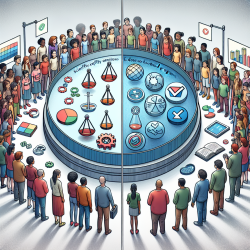Introduction
In the realm of prevention science, a critical gap persists in addressing the unique needs of Black, Indigenous, and People of Color (BIPOC) youth. The research article, Where’s the BIPOC Blueprint for Healthy Youth Development? The Role of Scientific Omissions in Our Struggle for Science Translation and Racial Equity in the United States, highlights the deficiencies in current scientific frameworks and calls for a paradigm shift towards more inclusive and equitable prevention strategies.
Understanding the Gaps
The article underscores the systemic oversights within prevention science that fail to adequately address the behavioral health needs of BIPOC youth. Current evidence-based programs often lack the cultural sensitivity and specificity needed to be effective across diverse racial and ethnic groups. This oversight is not merely a gap in knowledge but a reflection of structural racism embedded within scientific practices.
Implications for Practitioners
For practitioners working with BIPOC youth, this research highlights the importance of critically evaluating the applicability of prevention programs within diverse communities. Practitioners are encouraged to:
- Advocate for the inclusion of culturally relevant and equity-enhancing criteria in program evaluations.
- Engage in continuous learning and adaptation of interventions to meet the unique needs of BIPOC youth.
- Collaborate with researchers to co-create evidence that centers on the experiences and voices of BIPOC communities.
Call to Action
The article calls for a collective commitment from prevention scientists to rectify historical omissions and to prioritize equity in research and practice. This involves:
- Developing and testing interventions that are specifically designed for BIPOC youth.
- Ensuring that research methodologies and analyses account for racial and ethnic diversity.
- Building partnerships with BIPOC communities to foster trust and co-create meaningful solutions.
Conclusion
To truly promote the healthy development of all youth, it is imperative that prevention science evolves to address the systemic inequities that have historically marginalized BIPOC communities. Practitioners and researchers alike must engage in efforts to dismantle these barriers and create a more inclusive and equitable framework for youth development.
To read the original research paper, please follow this link: Where’s the BIPOC Blueprint for Healthy Youth Development? The Role of Scientific Omissions in Our Struggle for Science Translation and Racial Equity in the United States.










